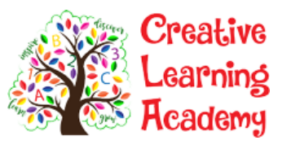Tampa Day Care
You Can Trust
5 Steps to Teach Conflict Resolution for Kids
Building friendship is important in a child’s development. Conflict resolution has a major role in creating healthy relationships. Kids will have challenges handling their own issues and conflicts.
A child who has difficulties expressing their feelings may shut down when conflict happens. They may feel hopeless during an argument when they are not able to find a solution to a problem.
How to teach conflict resolution for kids?
While adult intervention is needed in certain situations, it is also important to teach kids how to manage their emotions. With these few steps on how to handle conflicts on their own, they will be able to maintain friendships and become problem solvers.
Teach the Stoplight Method
When conflict arises, ask your child to calm down, close their eyes, and think of a stoplight. Tell them to take three deep breaths and recall something comforting when the red light is on.
When the stop light turns yellow, evaluate the situation. Is this something they can handle on their own or do they need an adult to help them? Think about what will work best. Choose a strategy and give it a try when the light turns green. Do they need help? Will they be able to compromise? Or do they need to just turn their back and move away from the conflict?
The red light calming method will help kids understand the whole situation and pick a strategy to resolve the conflict. Practicing this method when they are calm will help them remember the process better.
Talk about Feelings
Young children have difficulties controlling their emotions and may react quickly when upsetting things happen. Blaming, calling out names, or engaging in fights are common reactions to these problems. Teach them to practice talking about how they feel in a calm and healthy manner.
When they are upset with a friend, advise them to use “I feel” statements to express their feelings. “I feel sad when I am not included in group activities. Can I join next time?” states the feeling of being left out and offers a solution.
Knowing how to use these statements will help them focus more on a behavior rather than blame others.
Model Empathy
It is normal for young children to be overwhelmed when they face a friendship problem. A small misunderstanding may seem like a big issue. Listening to them and showing empathy will help them feel heard and understood. It will also help them empathize with others.
When your child comes to you to express their frustration with a friend, empathize. Let them know that you understand what they feel. Having arguments with friends is common, and what they do to work out this issue matters. And going to a parent to ask for support is a great coping approach.
Parents do not need to solve every problem their child encounters. The best support a parent can offer at this time is providing a safe environment to talk about their feelings and process emotions.
Promote and Practice Solutions
To easily solve a conflict, parents will immediately tell their kids what to do. However, it is also important to let kids learn how to find solutions on their own.
Get markers of different colors and a blank sheet of paper. Using their own point of view, ask them to describe what happened from start to finish. Once done, ask them to pick a color and think of three possible solutions to the problem that will work for them. Repeat the process, this time telling the story from their friend’s point of view.
Then let them choose a color representing their friend and provide a solution most suitable for their friend. Lastly, look for a common ground. If there is none, think of three more solutions until common ground is met.
This strategy will help kids empathize with their friends and find a solution that will benefit everyone involved.
Follow Up
The last step to conflict resolution is always to follow up. Check with your child how they are getting along with their friends. Ask them if the solution they came up with worked or not.
You can also create a jar of problem-solving sticks from the possible solutions you both discussed. Write out all the solutions and store them in a jar or a box. The next time your child faces a friendship problem, pull out a stick and give one a try.
Kids will face many ups and downs as they grow. Through these parenting tips, they will be able to overcome these challenges and maintain friendships.
If you are looking for the best preschool to take care of your child, visit Tampa’s Creative Learning Academy. Our passionate staff members are equipped to help your child handle difficult situations at any given time.
